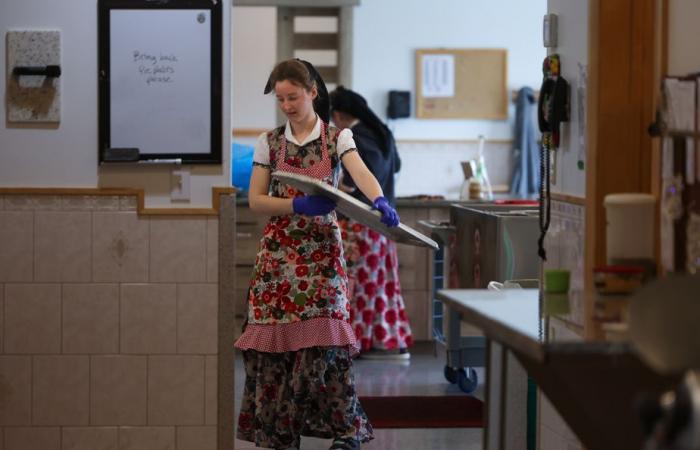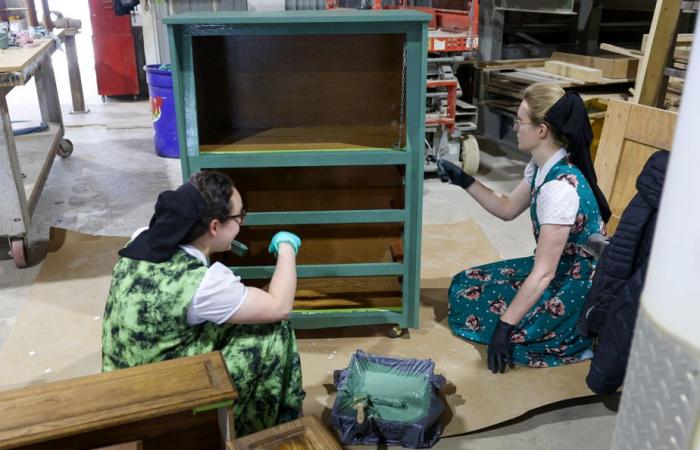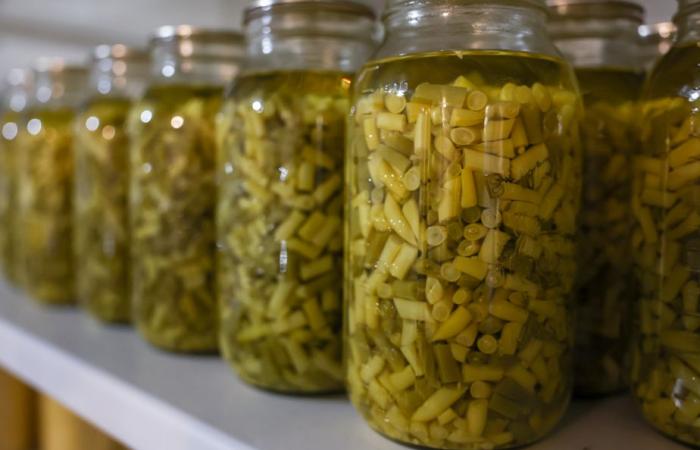(new Rededale) confusing. This is undoubtedly the word that best describes our visit to the Hutterite colony of New Rededale, in Manitoba.
Posted at 6:00 a.m.
- Stanley Baer, 58 ans
- Business manager
- Has spent his whole life in the Hutterite colony of New Rededale, Manitoba
Disputing because as much as this visit could have confirmed certain widespread ideas about the Hutteritis, as much as it shattered others. Let’s say that we oscillate here between tradition and modernity in a disconcerting way.
What? Tell yourself. Hutteritis are religious from Europe who founded hundreds of communities, called “colonies”, in Manitoba, Saskatchewan and Alberta. We sometimes see them passing through the cities of the meadows, dressed in traditional clothes, as if they arrived from another century.

Photo François Roy, the press
Stanley Baer and his son Sylvester (left)
We were curious to know them. However, I had been warned: access to these communities is not easy. Until the last minute, I thought I had to abandon the idea.
Then, while we are about to leave the Manitoba, I receive an improbable email. A named Stanley Baer, from the New Rededale colony, near the city of Portage La Prairie, agrees to receive us. In this trip which always brings us to the west, it involves returning to the east. We do not hesitate a second and turn back.
“I have no idea what you want, guys,” says Mr. Baer once we have landed in his office.
Gray beard, checkered shirt, suspenders: The 58 -year -old man displays the air of a man who has no time to waste.
“We want to understand who you are. »»
He will eventually give us much more time than promised and go around the colony.
-

Photo François Roy, the press
Outdoor family scene in the colony
-

Photo François Roy, the press
-

Photo François Roy, the press
Two young girls retreat a piece of furniture.
-

Photo François Roy, the press
The community center houses a laundry room, a daycare and a chapel.
1/4
Women in traditional clothes preparing meals for an entire community. A chapel where the Hutteritis are collected. A small building housing an artisanal cheese dairy intended to meet the needs of the community: almost everything we imagined is there.
But we also saw things that we did not expect. An ultra -modern industrial complex that manufactures and sells 80,000 tonnes of animal food per year. Garages filled with semi-trailers, combine harvesters and brand new tractors. People who brew cases a thousand leagues from voluntary simplicity and austerity that we imagined.

Photo François Roy, the press
The community center forms the center of the colony, around which the houses are distributed.
In front of my astonishment, Stanley Baer admits that the colony is not necessarily representative of the entire Hutterite movement.
“We generate much more money than most other colonies, we will say it like that,” says the one who manages the animal food factory.
The Hutterite movement was born in the region of Tyrol, Austria, in the 16th century, before spreading elsewhere in Europe. Hutteritis are Christians who try to live according to the precepts of the Bible. They have common origins with the mennonites and the Amish.
The peculiarity of the Hutteritis is that they have great importance to community life. A philosophy inspired by the Bible.
“All those who believed were together and they had everything in common. They sold their properties and their goods and they shared the product among all, according to needs, ”reads in acts 2: 44-45.
Everything here belongs to the community and is distributed according to the needs of each. I have a credit card with my name, but it is linked to the community.
Steve Baer, member of the New Rededale community and animal food factory manager
The community center forms the center of the colony, around which the houses are distributed. During our visit, two young women dressed in long colorful dresses, scarves on their heads, grate cabbage and carrots.
All meals are taken here in common. “Women on one side, men on the other,” says Stanley Baer, designating the vast cafeteria.
-
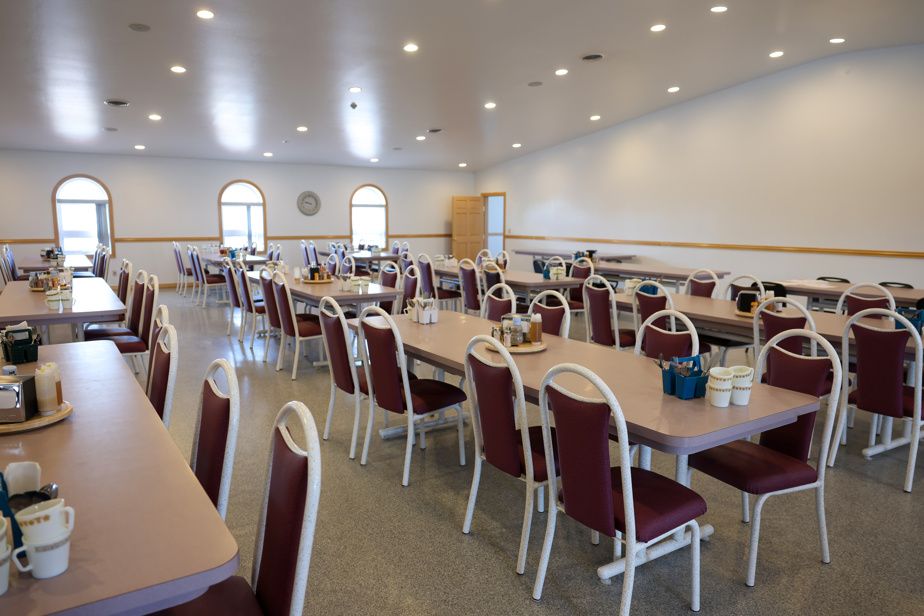
Photo François Roy, the press
-The whole community takes its meals together, women on one side of the room and men on the other.
-
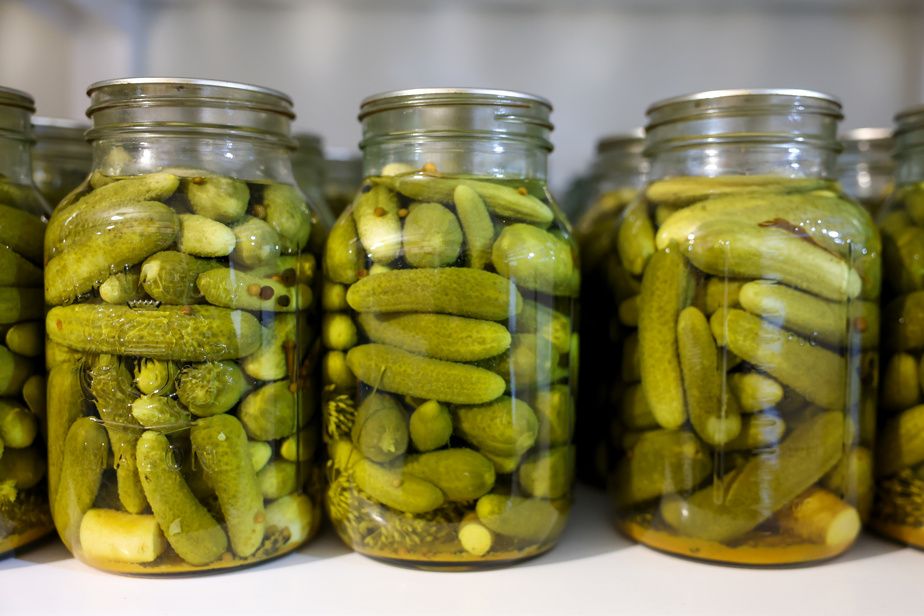
Photo François Roy, the press
The basement of the community center is filled with various canned preserves.
-

Photo François Roy, the press
The kitchen knives are assigned to the different women preparing meals.
-

Photo François Roy, the press
Everything belongs to the community and is distributed according to the needs of each, explains Stanley Baer.
-

Photo François Roy, the press
Community chicken slaughterhouse
1/5
In the basement, there are huge pantry filled with preserves (beans, pickles, apples) and various victuals. The community has an orchard, a chicken slaughterhouse, vegetable gardens, a cheese dairy.
The community center also houses a laundry room, a daycare and a chapel. “In principle, everyone goes there every day. In reality, do offices stand every day? No. And does everyone come to every office? No, “says Stanley Baer, who nevertheless affirms that religion plays a central role in the life of Hutteritis.

Photo François Roy, the press
The animal food manufacturing plant allows the New Rededale colony to generate more money than most other Hutteritis communities.
The factory deserves an article in itself. There are food and minerals for poultry and livestock and which are exported throughout Western Canada. An incessant truck ballet comes to supply it. Business has been even better since Donald Trump sparked his trade war, Canadian breeders trying to get a source of food.
“Yes, Trump gives us a boost,” says Stanley Baer.
I have a thousand questions in mind about the life of Hutteritis. Language? Stanley Baer explains to me that they always communicate with each other in the Austrian dialect of Tyrol where the movement was born.
School?

Photo François Roy, the press
The members of the community communicate with each other in the Austrian dialect of Tyrol where the movement was born.
“We don’t want some things that are taught in the public system. Sex education, these things, we just don’t agree with that, ”says Stanley Baer.
The colony therefore concluded an agreement with the Government of Manitoba. She built the school at her expense … in return for a right of way on what the professor who came from outside teaches children.
But the most fascinating is perhaps this “swarm” which currently occupies New Rosedale. At 163 individuals, the colony exceeded the size deemed optimal. A new colony is therefore being built north of here. Half people and property will soon be transferred.
“It is a model that has proven itself over the centuries,” explains Stanley Baer. From a certain size, it becomes more difficult to live in community. »»
I ask Mr. Baer if he follows the current electoral campaign. “You speak to a guy who must think to remember which party is in power …” He nevertheless affirms that the Hutteritis generally exercise their right to vote.
Impossible to grasp all the complexity of a movement like that of the Hutteritis in a morning. But I leave you on the words of Edith Baer, Stanley’s wife, met at the community center.
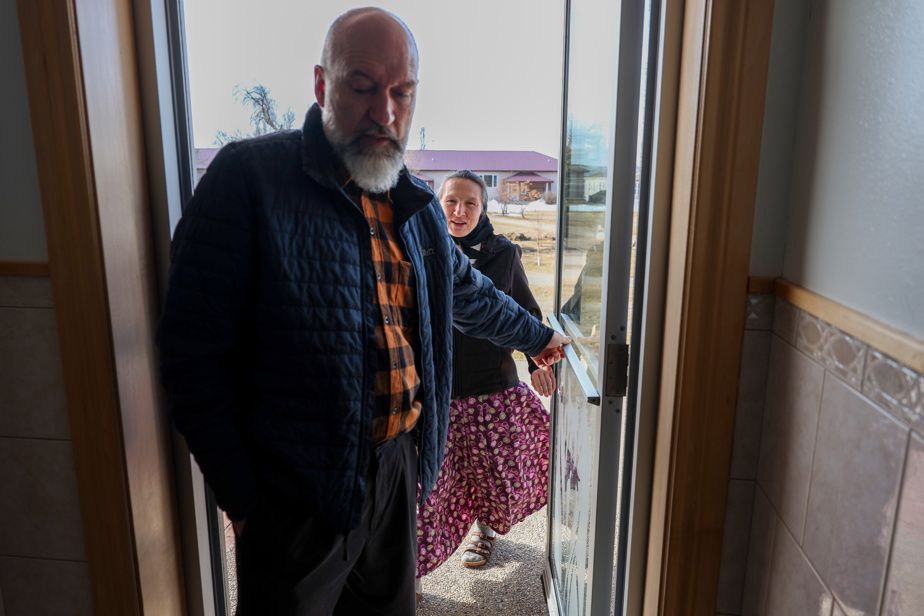
Photo François Roy, the press
Stanley Baer and his wife Edith
“Our whole life is based on the teachings of Jesus,” she sums up. Love God with all your heart and your neighbors in the same way: these are the two commandments that I could give you. We try to live this way. We are not perfect, far from it! Living in community comes with challenges, many challenges. But it is also beautiful. »»
What does that mean, being Canadian?
To be Canadian, for me, that means everything. I traveled in Europe, I was wearing a Canadian flag so as not to be confused with an American. Everywhere, you say that you are Canadian and you are well received.
What do you like about Canada?
The reason why the Hutteritis is here is the freedom that we have all, including freedom of religion. Hutteritis has migrated from Ukraine to the United States and then was persecuted in the United States and migrated to Canada. It was during conscription during the first world War, the Hutteritis refused to carry arms. The United States finally realized that it lost experienced farmers and ended up inviting them to come back. We were well received in Canada.
What should change in Canada?
The first thing is the distribution of wealth. Look at the Manitoba roads. They have nothing to do with those of Alberta. I think the wealth of there should be better distributed. The second obvious problem is the lack of nurses, doctors and medical staff. Do we pay them enough? Are we fit enough? How to retain them? I don’t know where the problem comes from, but you have to solve it.





